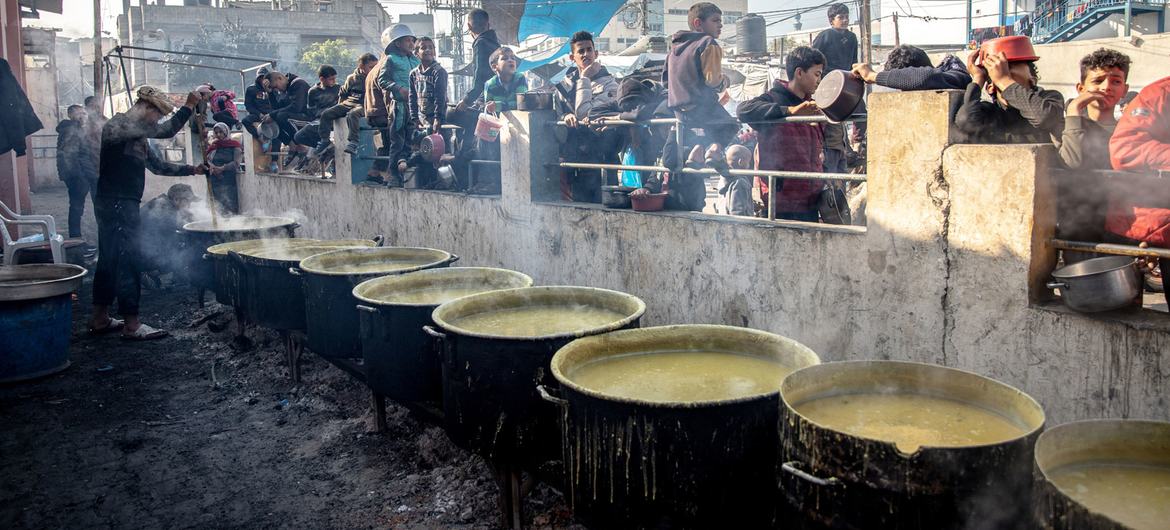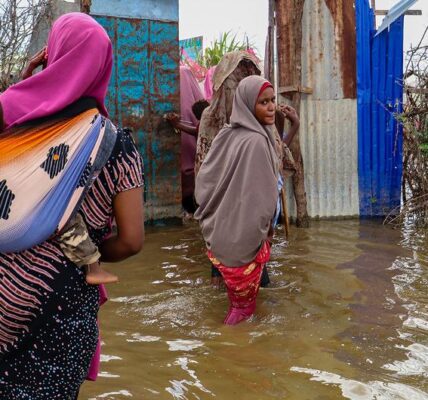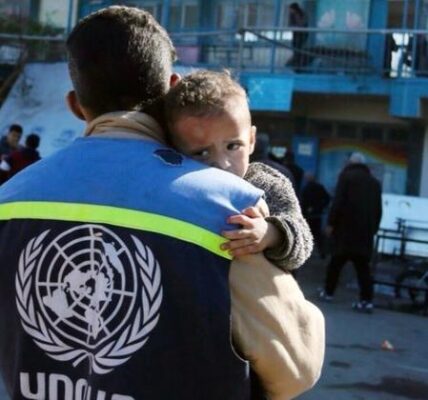The UN humanitarian agency cautions that all individuals in Gaza are experiencing hunger.
The most recent alerts from the United Nations (UN) relief agency for Palestinians, known as UNRWA, and the UN World Food Programme (WFP), emphasized the danger of starvation and illness in densely populated regions. These areas have seen a mass exodus of tens of thousands of people due to intense bombing in the northern and central parts of the enclave.
Skipping meals
According to a post from WFP on X (formerly known as Twitter) on Tuesday, the people of Gaza are experiencing extreme hunger. Skipping meals is a common occurrence and each day is a struggle to find enough food. Many people go without eating for an entire day and night, with adults sacrificing their own meals for the sake of children.
According to UNRWA, more than one million individuals have sought refuge in the already densely populated Rafah city in the south, with a large number of them having to sleep outside without proper clothing or shelter to protect them from the cold.
UN humanitarians have cautioned that children who are undernourished are especially vulnerable, as recent evaluations of food insecurity have revealed that half of Gaza’s inhabitants are experiencing starvation.
Infections spreading
Reiterating these worries, the World Health Organization (WHO) cautioned about a high likelihood of outbreaks of communicable diseases.
According to the report, there have been 179,000 instances of acute respiratory infection, 136,400 cases of diarrhea in children under five, 55,400 cases of scabies and lice, and 4,600 cases of jaundice since mid-October.
According to a recent report from UNRWA, as of Tuesday night, 315 individuals have lost their lives and 1,148 have been injured while seeking refuge in UNRWA shelters during the current conflict. The agency’s premises have also been affected by approximately 212 incidents, including 60 direct hits.
As of now, the most recent count of UNRWA employees who have lost their lives is 142. Since October 7th, approximately 1.9 million people in Gaza, which makes up 85% of the population, have been forced to leave their homes, with some experiencing displacement multiple times.
The number of deaths has risen to over 22,000.
Since the Hamas-led attacks in southern Israel on October 7th, which resulted in 1,200 deaths and 240 people being taken hostage, there have been ongoing conflicts and attacks in the Gaza Strip. The Israeli Defense Forces (IDF) have launched strikes from the air, land, and sea, resulting in a death toll of over 22,000 people, with the majority being women and children according to local health authorities.
According to IDF reports on December 30th, 168 Israeli soldiers have died and 955 have been wounded since the beginning of the Gaza ground operation.
According to reports, Gaza’s health department has confirmed that over 200 Palestinians have lost their lives since Monday, and 338 have been injured.

Palestinian refugees at Al-Shaboura camp in Rafah are awaiting food assistance.
Thousands more presumed dead
The latest emergency update from the World Health Organization (WHO) stated that an extra 7,000 individuals have been reported as missing or trapped under debris.
The report stated that 600 individuals have lost their lives in close to 300 assaults on medical facilities since October 7th. These attacks have caused damage to 26 hospitals and 38 ambulances.
According to the latest report from the World Health Organization, approximately 52,000 expectant mothers in Gaza are delivering about 180 infants each day. This update also revealed that out of the 1.93 million displaced individuals in Gaza, 1,100 require kidney dialysis, 71,000 have diabetes, and 225,000 require treatment for high blood pressure.
Health services reviving
The UN’s aid coordination agency, OCHA, also mentioned that the health authorities in Gaza were able to restart some hospital services in the northern part of the region.

Surgeons are getting ready for an operation at the Nasser Hospital in Khan Younis.
Some of the facilities mentioned were Al Ahli Arab Hospital, Patients Friends charity hospital, Al Helou International hospital, Al Awda hospital, and several primary care centers.
According to OCHA, this took place despite the dangerous conditions faced by medical teams working in areas with frequent bombings and near healthcare facilities.
In addition, the Ministry of Health in Gaza, along with UNRWA and WHO, are collaborating on a strategy to reopen health centers in order to address the healthcare needs of those who have been displaced in various locations.
West Bank crisis
In a similar event, OCHA announced the initial instance of Palestinian property being destroyed in the West Bank in 2024, specifically in al-Maniya in Bethlehem.
In the occupied West Bank, there have been 300 Palestinian fatalities – 79 of which were children – since October 7. These deaths are a result of escalating attacks by both Israeli Security Forces and settlers, which have been verified and criticized by UN human rights chief Volker Türk.
Prior to the 7 October attacks by Hamas, a total of 200 Palestinians had lost their lives in the West Bank in the previous year. This was the highest recorded number of casualties in a 10-month period since the UN began documenting in 2005.
During the time frame of 7 October to 20 November, a report from the OHCHR (UN human rights office) noted a significant rise in airstrikes and military actions in the West Bank. These actions resulted in fatalities, injuries, and significant harm to civilian structures and infrastructure in refugee camps and other densely populated areas.
According to OCHA’s first update of 2024, Israeli authorities demolished a total of 1,119 structures last year. This is the highest number since data collection started in 2009 and resulted in the displacement of 2,210 individuals.
According to the aid organization’s website, the fear of losing homes and means of income creates a hostile atmosphere that forces people to flee their homes.
Source: news.un.org



